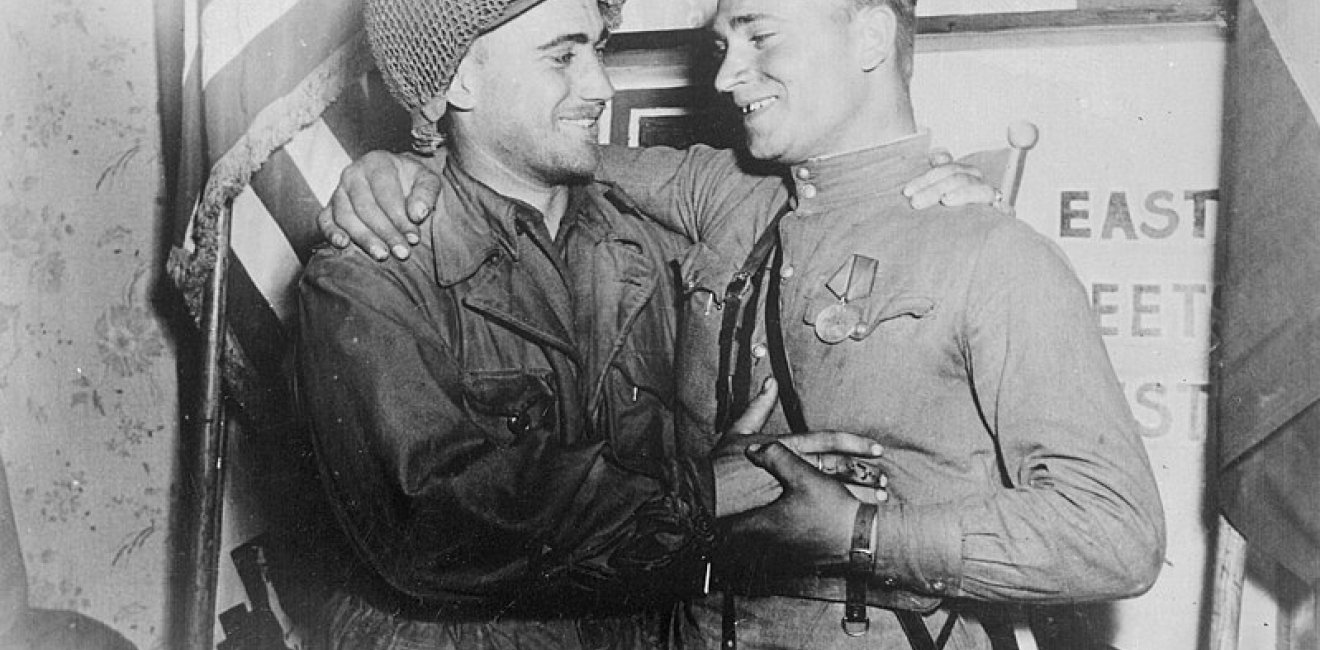In Enemy Number One: The United States of America in Soviet Ideology and Propaganda, 1945-1959, I analyzed how Soviet people adapted their worldview to postwar Soviet ideology, which almost overnight turned a recent friend and ally, the United States, into enemy number one.
Even with a long history of ambivalent attitudes toward the American other in Russia, this was a radical turn of events. As the Cold War started, Stalin himself advocated for a top down anti-American campaign that seeped into all corners of Soviet society. And in the aftermath of Stalin‘s death, Khrushchev advocated for peaceful coexistence with the West, which softened the anti-American official focus to some extent although it was still unacceptable for Soviet citizens to express too much interest in the American other.
In order to understand what Soviet people thought about the United States, I had to first figure out how the authorities presented information about the outside world to Soviet audiences. I combed through documents from the Central Committee’s Department of Agitation and Propaganda (available in the Russian State Archive of Socio-Political History and the Russian State Archive of Contemporary History) to be able to outline the official strategy put to use in the ideological Cold War with the United States. In the late Stalin era, Soviet agitators utilized both the existing works of Soviet writers, performers, and journalists as well as American progressive authors and fellow travelers in the anti-American campaign in the Soviet Union. They also called for new materials with a specific focus and outlawed all positive mention of the wartime alliance.
Knowing who the current enemy in Soviet society was could be a matter of life and death for Soviet citizens and it is therefore not surprising that people reacted to the ideological campaigns. I located some traces of these kinds of reactions in the review files of the Soviet Procuracy, now stored at the State Archive of the Russian Federation. These review files contain the rehabilitation records for Soviet individuals sentenced according to the infamous article 58-10 of the Soviet criminal code, the foundation for political terror in the Soviet Union. These files revealed, that many people had been accused of having pro-American sentiments, ranging from listening to enemy radio broadcasts to doubting Soviet superiority in the Cold War struggle.
Like another source group, svodki (reports on the mood of the population), the review files show that Soviet authorities were concerned about unfavorable comparisons between the two superpowers. But while these types of sources should not be seen as evidence of neither pro-American nor anti-Soviet sentiments, both svodki and review files do indeed reflect the fears of the Soviet authorities.
This fear was visible in the various sources, including judicial records and official strategies and reports on propaganda and cultural relations. Studying the Soviet cultural bureaucracy does not reveal what ordinary people actually thought about the United States, but relentless efforts in terms of controlling perceptions of America (including the jamming of foreign radio broadcasts) suggest that Soviet authorities feared that anything from favorable mention of the United States to consuming American culture would influence the Soviet outlook in unwanted ways.
Personal letters written to Premier Khrushchev on the eve of his 1959 tour to the United States provided another way of identifying Soviet people’s perceptions of the United States. As a part of his peaceful coexistence discourse, Khrushchev started celebrating the wartime alliance as proof of the two superpowers’ ability to work together. Soviet citizens embraced this narrative enthusiastically when they wrote letters to Khrushchev, wishing him happy travels while reminiscing about the alliance or suggesting how to move the relationship with the United States forward.
Soviet ideological narratives came from the highest level and were consequently executed by the Communist Party through Agitprop, the Soviet Information Bureau (Sovinformbiuro), the Telegraph Agency of the Soviet Union (TASS), and various other publishing houses and distributers. Also, Soviet front organizations such as VOKS (the Soviet All-Union Society for Cultural Relations with Foreign Countries) and the travel company Intourist (the State Joint-Stock Company for Foreign Tourism) were extremely important for maintaining contacts with foreign countries and they too had to make sure that cultural relations within their purview were ideologically acceptable at all times.
After Stalin´s death, a 1955 “revival” of cultural relations with the United States was noticeable to everyone involved in the cultural bureaucracy. With the revival came hands on experiences and face-to-face encounters with the enemy but the increased knowledge about the outside world also created confusion and sometimes even strong doubts about the Soviet strategy of relating to the United States of America.
It is notoriously difficult to find out what Soviet people actually thought about the Soviet regime and the superpower conflict during the Cold War. And as it turns out, there is no way around the authoritarian Soviet state when looking at perceptions of the United States of America in the Soviet Union. Studying Soviet ideology and propaganda towards the United States in the postwar period reveals a complicated organizational structure, ignorance, and fear. But it also reveals a citizenry that was curious about the outside world, while always aware of the official Soviet ideological narratives about the new enemy.






